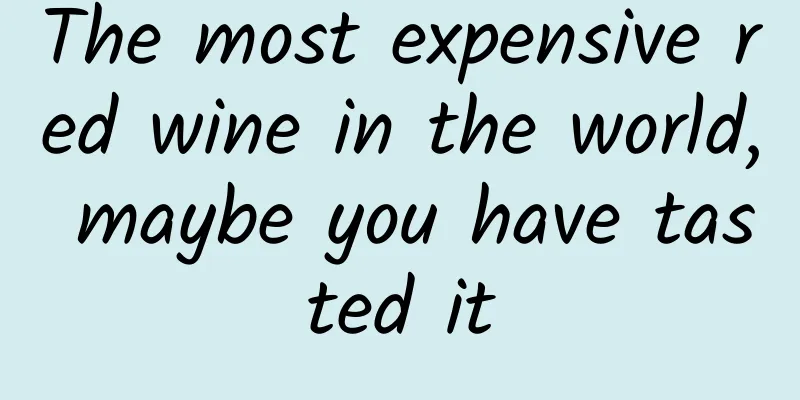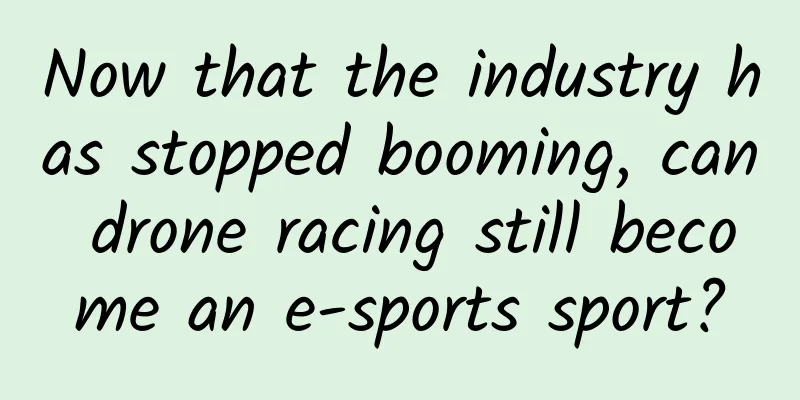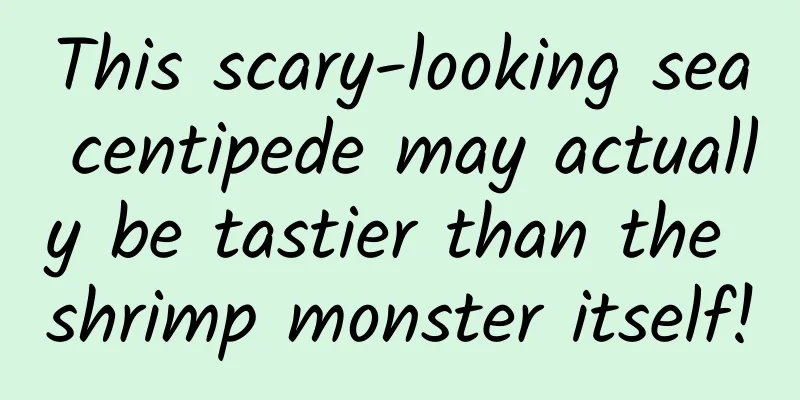The most expensive red wine in the world, maybe you have tasted it

|
Every November, the world's " most expensive spice " - saffron (also known as saffron and crocus) enters the harvest season. In the saffron planting cooperative in Chongming, Shanghai, the staff held the bulb with one hand and pinched the flower with the other. With a little force, a small purple flower was picked intact. After picking the flowers, the most critical step is to " peel off the filaments ". The filaments are very fragile and easy to break, but in the hands of skilled workers, three precious red filaments are quickly peeled off. Crocus grown in Chongming, Shanghai|Chongming, Shanghai The wholesale price of dried saffron ranges from $500 to $5,000 per pound, depending on its quality and color. In the retail market, it is priced by gram, at $50 to $100 (about RMB 350 to 700) per gram, which is probably more expensive than gold . Dried saffron stigmas | Hubertl / wikipedia So, what exactly is saffron, and why is it so expensive? The most precious red Saffron (Crocus sativus) is actually a herbaceous plant of the genus Crocus in the family Iridaceae. It has slender leaves like onions , and garlic-like bulbs buried in the soil, but it blooms extremely gorgeous and attractive purple flowers . Near the stamens, the petals gradually become darker purple, and three red stigmas clustered around the yellow stamens are the essence of saffron. Onion-like leaves, purple petals, and three red stigmas | Victor M. Vicente Selvas / wikipedia Crocus bulbs | RudolfSimon / wikipedia The stigma has a special smell and color, which may have evolved to attract specific insects for pollination. However, the saffron we eat now is already a sterile triploid and does not exist in the wild . All the parts of saffron as a spice are these three stigmas, which are extremely rare, so the unit yield is extremely low . One pound of finished saffron (all dried stigmas) requires about 70,000 flowers (210,000 stigmas!), which can fill an entire football field . Crocus flowers only bloom for two weeks in the fall, and many workers have to start picking them in shifts early in the morning. Since the stigma is so delicate, all the work of picking the stigma and drying it has to be done by hand . After drying, saffron will be sealed in a glass container to keep it fresh. Freshness is an important factor in determining the price of saffron. Saffron merchants roaming the market will pay special attention to the color and completeness of the saffron. People are busy picking saffron|Safa.daneshvar / wikipedia You know what, saffron and gold do have some similarities. They're both expensive, their colors are alluring, and they're both edible (yes, gold foil is edible). Plus, people have long believed that saffron can arouse sexual desire - so a big gold chain must have the same effect (fog). The sincere heart in the myth The cultivation and domestication of saffron are closely related to Greece . People have found murals depicting saffron in the ruins of Santorini and Crete on the coast of the Aegean Sea. There is also a story about saffron in Greek mythology - the handsome boy Crocus (the Latin name of saffron comes from the Semitic Aramaic language, meaning "yellow") fell in love with a tree elf Smilax (Smilax) in the forest near Athens. However, Smilax was not so interested in Crocus, so he cast a magic spell and turned him into a saffron, and the three bright red stigmas were a sincere heart (sounds a bit weird...?). So if I have to say, saffron represents unrequited love, infatuation and heartbreak , which is not so romantic. Crocus is about to be turned into saffron|Mabre-Cramoisy (1676) However, this did not affect the ancient Greeks' love for saffron. They collected saffron stigmas, dried them and made spices, which were sprinkled in meeting halls, palaces, theaters and bathrooms. It was very luxurious and was also used to treat diseases and stop bleeding . Egyptian nobles in the Ptolemaic era also used saffron for bathing (it was Cleopatra who was also quite rich). The red color of saffron, like the purple of murex, has become a symbol of luxury in the dye industry. Traveling among nobles from various countries The name saffron has a more cultural component. The Latin word safranum actually comes from the Old French word safran, which in turn comes from the Arabic word za'farān. Spanish was influenced by Arabic and used the word azafrán. The Arabic word can ultimately be traced back to the Old Persian word zarparan, which finally means " yellow stamens ." In addition to the red stigma, it also has yellow anthers|KENPEI / wikipedia At this point, the path of saffron's spread has become clearer. The Phoenicians, Mediterranean merchants, brought saffron to ancient Persia through trade, then to Arabia, and finally back to Western Europe with the conquest of the Arab dynasty. In the 16th century, cooks in the Valencia region of Spain began to add saffron to the roasted rice in porcelain basins, giving the rice an orange-yellow color , which became the prototype of Spanish paella. Saffron with Rice | epicurious.com The famous fish stew in Provence, France, must also be seasoned with saffron. An old French recipe from the 14th century records roasting a swan with saffron : "First, the swan must be skinned, skewered and roasted, then sprinkled with saffron... After it is cooked, the goose meat is stuffed back into the fur and decorated with saffron-dyed egg yolks." How does it taste? I dare not imagine... In short, after such a journey, "saffron", which has the flavors of Persia, Arabia, France and Spain, has become the name of saffron together with the Greek word crocus. Looking eastward, saffron was introduced to China after being carried across the Qinghai-Tibet Plateau by monks from Iran, India and Kashmir. Here, saffron also has the nickname "saffron", although it itself is not so closely related to Tibet. Crocus on the plateau|Lela154 / wikipedia If you think about it carefully, saffron has left a noble and mysterious figure in various dynasties spanning the Eurasian continent as early as BC - it paved the way for Nero, gave fresh food to Pliny the Elder, provided a bath for Cleopatra, and commanded the army of Alexander the Great... In the food industry, there may be no other saffron except saffron. High-grade food dyes Putting aside the various miraculous healing properties of this expensive spice, just a little bit - often just one sprig - can give a plate of food an attractive and bright orange-red color . Almost every Spanish paella has "a little saffron" in its ingredients. Fry the rice and onions and add soup, then throw in shrimps, scallops, mussels, squid, crab legs, fish and other seafood and green vegetables, then sprinkle a little bit of saffron like magic , and as the soup rolls, the attractive red spreads little by little, soaking every grain of rice that has absorbed the soup. If you want to fully release the flavor of saffron, you can throw a few saffron into a small amount of water before cooking and soak them for a while like tea. You will get a bright red soup and then pour it evenly on the food. Soak saffron in water to get a bright red soup|malayalam.boldsky.com Saffron is different from ordinary food dyes. If you don't hesitate to add a few more saffron, it will make the paella wrapped in a slightly sweet hay aroma , which comes from zeaxanthin, lycopene and carotene. However, if eaten alone, saffron will have a bitter taste, which comes from a substance called "crocin" (then again, who would be willing to eat it alone?). Most of saffron's unique color comes from crocin , which can now be artificially extracted and used as a food additive for dyeing. This greatly reduces the production cost of some foods, but it loses that unique fragrance. Precious and fragile Before the discovery of the New World, food materials were not abundant, spices were very rare, and many spices were extremely expensive (including sugar, which is very cheap today). Some countries even enacted laws that explicitly stipulated that it was illegal to mix saffron with inferior ones or replace saffron with other cheap spices such as turmeric. Today, spices such as sugar, pepper and cloves are readily available, but saffron is still as expensive and mysterious as ever. Together with truffles and black caviar, it exists in cooking methods that are almost ostentatious . Today, although saffron is grown from Spain to Greece, Macedonia, Turkey, and the Middle East, most of it is produced in the highlands of Iran and Kashmir, accounting for more than 85% of the world's production. Spain once produced more than 70% of the world's saffron, but as labor costs rose, the focus of production gradually shifted to Iran. However, the fragile natural environment on the Iranian plateau is difficult to resist natural disasters, and the production of saffron is not particularly stable , which further pushes up its price. Crocuses planted in fields|modernfarmer.com But there are also good things. Today in Kashmir and Afghanistan, people are trying to replace the traditional opium cultivation in the "Golden Crescent" region with more profitable saffron - I hope this expensive plant can really bring some "bonus" benefits to people in remote areas. Author: Li Zi Editor: Calendar Girl, Little Towel Title image source: gardenia.net |
<<: These are the scariest animal sounds on Earth, and you probably hear them all the time
>>: When using azithromycin to treat mycoplasma pneumonia, remember these 6 details!
Recommend
520 Valentine's Day topic marketing!
Long time no see, everyone. In this episode of 5 ...
The entire process of account building and optimization, a must-read for investment!
The construction of an account is like a pyramid,...
In the third quarter, the Chinese mobile phone market changed from "one superpower and many strong players" to "many strong players competing for supremacy".
[[433226]] Data from research institutions show t...
"10 Efficient Law Learning Methods of Tsinghua and Peking University Students" teaches you how to improve your learning efficiency
Training course content: The course starts from t...
It is said that the money counting machine has turned into a black hole: 40 banknotes were counted 9 times and only 10 were left
40 100-yuan bills were put into a money counting ...
This ancient giant bear looks cute, but actually...
The River of Life exhibition area of the Shangh...
Danlel Le·Script Killing Creation Writing and Cashing Camp Video
Danlel Le·Script Killing Creation Writing and Cas...
If you have heel pain, don’t just bear with it!
Author: Tang Qin, Deputy Secretary-General of the...
Last night, a 4.8-magnitude earthquake occurred in Luding County, Ganzi Prefecture, Sichuan! Please save this guide to effective escape and self-rescue in case of an earthquake
The China Earthquake Networks Center officially d...
MDSA offline open class will help you decipher high-performance APP development
With the fragmentation of people's demand for...
How to do Tik Tok marketing?
During this period, Tik Tok is very popular and e...
How did the "excrement" from billions of years ago become precious geological "shit" material?
I remember a joke: A asked B, "Do you have a...
Dingxiangyuan's ingenious mechanism for free coffee cup growth campaign
DXY is China's leading medical connector and ...
A mind map will help you understand the tricks of operating the points mall!
Points Mall Operation System (Mind Map of this Art...
Craving some nuts in the morning? Don’t eat stale nuts!
Nuts have always been the first choice of snacks ...









